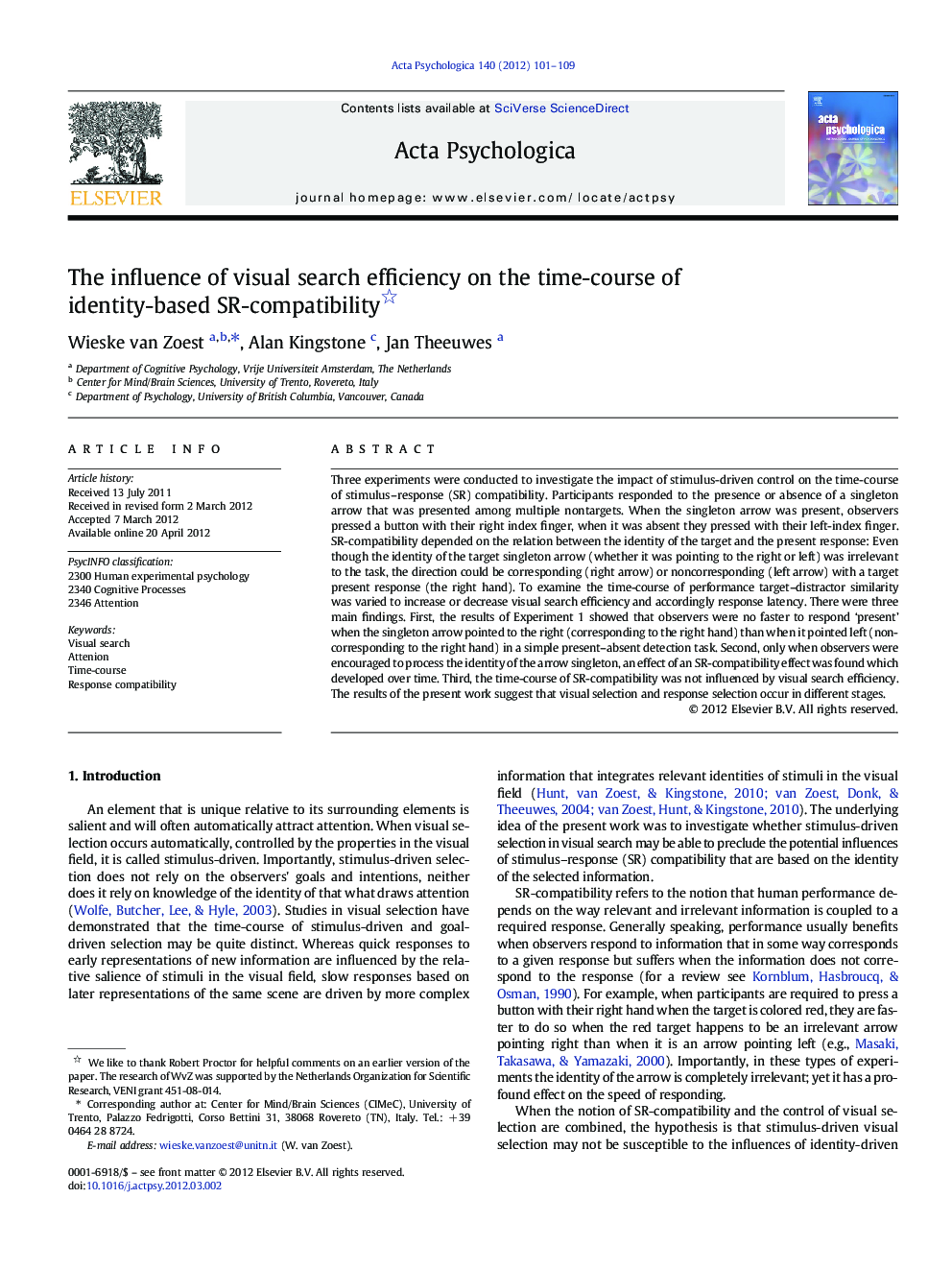| Article ID | Journal | Published Year | Pages | File Type |
|---|---|---|---|---|
| 919979 | Acta Psychologica | 2012 | 9 Pages |
Three experiments were conducted to investigate the impact of stimulus-driven control on the time-course of stimulus–response (SR) compatibility. Participants responded to the presence or absence of a singleton arrow that was presented among multiple nontargets. When the singleton arrow was present, observers pressed a button with their right index finger, when it was absent they pressed with their left-index finger. SR-compatibility depended on the relation between the identity of the target and the present response: Even though the identity of the target singleton arrow (whether it was pointing to the right or left) was irrelevant to the task, the direction could be corresponding (right arrow) or noncorresponding (left arrow) with a target present response (the right hand). To examine the time-course of performance target–distractor similarity was varied to increase or decrease visual search efficiency and accordingly response latency. There were three main findings. First, the results of Experiment 1 showed that observers were no faster to respond ‘present’ when the singleton arrow pointed to the right (corresponding to the right hand) than when it pointed left (noncorresponding to the right hand) in a simple present–absent detection task. Second, only when observers were encouraged to process the identity of the arrow singleton, an effect of an SR-compatibility effect was found which developed over time. Third, the time-course of SR-compatibility was not influenced by visual search efficiency. The results of the present work suggest that visual selection and response selection occur in different stages.
